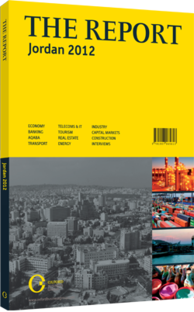Jordan Cement Factories: Mining & Extraction
THE COMPANY: Jordan Cement Factories (JCF) was established in 1951 and started operations in 1954, making it one of the kingdom’s oldest enterprises. The company had an exclusivity agreement with the government of Jordan until 2001. The company went through a number of milestones, including establishing operations in Sudan and an exporting hub in the port of Aqaba in 1992. In addition, JCF produces cement in two factories and also sells ready-mix concrete through a subsidiary.
In 1998 the Lafarge Group of France bought a 33% stake in the company, a share which was subsequently raised to 50.2%, giving Lafarge Group control over JCF. Lafarge came in not only as a shareholder but as an active manager, and brought with it technical capabilities that helped improve the operations and management of the firm, especially in regards to training, research, quality assurance, environmental safety and customer service.
CHALLENGES: JCF has had to deal with a number of challenges over the past few years, including increased competition, rising production costs, slowing cement demand, demands from employees and pressure by environmental activists. Over the last few years, three new cement producers commenced operations in Jordan, which added millions of tonnes of capacity to JCF’s 4.8m tonne capacity. The most challenging aspect of this competition was that one firm was granted a licence by the authorities to import clinker – the main material used in the production of cement – from neighbouring countries, where the cost of producing it is a fraction of the cost of producing it in Jordan. At the same time, demand for cement dropped following the onset of the 2008 global financial crisis, which led to a marked reduction in activity in the kingdom’s construction and property development sector.
Fuel costs account for around 70% of JCF’s variable production costs, and that has created a severe problem not only for JCF but for the Jordanian industrial sector as a whole because the kingdom imports all of its oil at market prices, which have risen considerably over the last few years. JCF’s attempts to reduce its energy costs by switching to alternative energy sources, such as oil shale and coal, have for the most part failed because of the delay in the supply of oil shale and widespread concerns in the community about the environmental consequences of using coal.
The recent growing attention to environmental issues brought JFC’s dust emissions to the forefront, and environmental concerns have reached the point of calling for the relocation of the company’s main and largest factory. JCF invested heavily with the help of Lafarge Group to reduce emissions by building a new cement silo, improving the delivery system and upgrading its air filters.
DEVELOPMENT STRATEGY: JCF’s main objective is to continue to have the leading share of the Jordanian market, and it feels that its strategy is to achieve this goal by being a cost leader. The company has moved to reduce its costs by reducing its workforce through a system of early retirement packages, which it intends to continue for the foreseeable future. At the same time, the company shuts down its production lines at times of slow demand.
However, the main strategy is still centred on reducing the cost of energy, which the company has attempted to do by studying alternatives, such as coal, oil shale and natural gas. Coal seems to be the most viable option as supplies of gas from Egypt are scarce and oil shale viability is in question. However, using coal, while approved by the government, is still being opposed by the local community.
At the same time, the company is working to level the playing field by petitioning the government to take a closer look at the cement industry and eliminate any unfair advantages. For example, all other producers are allowed and do use coal, but JCF is not. Moreover, one producer imports clinker at a fraction of the cost JCF has to pay to produce it at home.
You have reached the limit of premium articles you can view for free.
Choose from the options below to purchase print or digital editions of our Reports. You can also purchase a website subscription giving you unlimited access to all of our Reports online for 12 months.
If you have already purchased this Report or have a website subscription, please login to continue.

